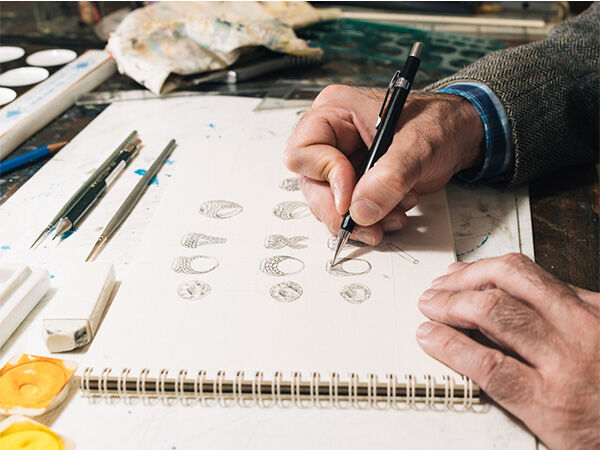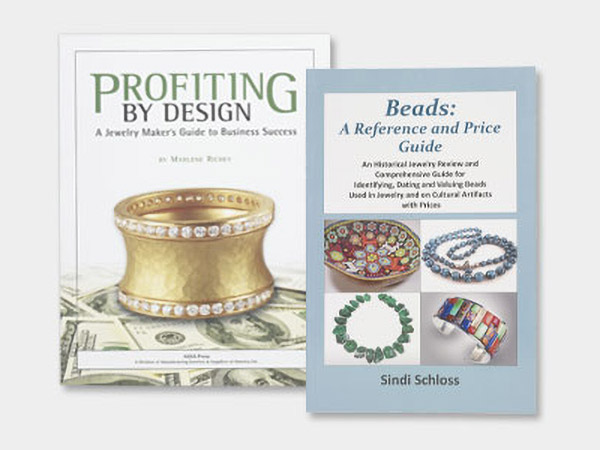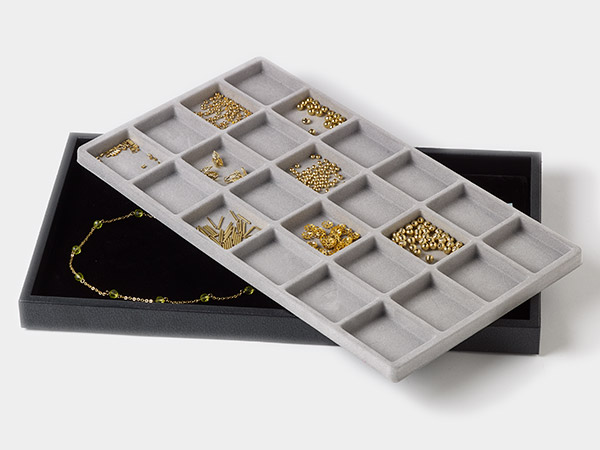A Jewelry Maker's Portfolio
What's a jewelry maker's portfolio? Do I need a portfolio in the jewelry design industry? How do I make a jewelry portfolio? Never fear! Here's a guide to defining and creating your own jewelry portfolio, including examples and tips for documenting your designs with professional-quality photos. Get ready to share your talent with the world, increase sales and showcase creative successes with a well-organized jewelry designer's portfolio.
What is a Jewelry Portfolio?
A jewelry design portfolio is a collection of work to display an artists' creations and accomplishments. A portfolio is an invaluable tool when presenting your work to prospective clients and employers, applying for juried artisan fairs, building online sales, promoting your jewelry-making brand, and more.
Documenting jewelry-making projects also lets you easily reference past designs, whether you're planning a jewelry-making class or to remake a piece. Your portfolio will also serve as a reminder of your creative accomplishments, giving you the opportunity to view the growth of your skill and style over time.
Building a Jewelry-Designer's Portfolio
The best way to create a jewelry maker's portfolio is to document jewelry pieces as you finish them. Going back in time can be challenging, you may no longer have the piece and it can be difficult to remember the details once you've moved on to other projects. Think of your portfolio as a constant work in progress.
Jewelry Portfolio Format
The key to putting your portfolio together is finding a format that works for you and can be easily shared with others. Think about how you would like to share your work. Do you mostly promote your business online or do you show people your work in person?
A portfolio can be digital images, a scrapbook or even something as simple as a well-organized binder. You may want to develop an online portfolio through a blog or website, social media account or online photo program for easy accessibility and sharing. Online pages can be printed if you need to put together a hard copy. Many jewelry designers prefer to create a tangible copy of their jewelry portfolio for personal reference. It's also nice to be able to take a copy of your portfolio with you where internet may not be available.
Organizing your work by date created, materials used or specific styles makes it easier to find certain pieces for certain customers.
Jewelry-Designer's Portfolio Photo Tips
The adage "A picture is worth a thousand words," is a good thing to keep in mind when compiling a jewelry designer's portfolio. Photograph designs in progress (step-by-step photos are helpful for future reference) or include a picture of each completed piece. You may want to use a similar display/background for each of your finished pieces. This gives a continuity through your entire portfolio.
Information to consider including with your photos:
- Title of the piece
- Creation date
- Materials list
- Your inspiration for the design
- Notes about design
- Techniques
- Helpful hints/tips for recreating the piece
- How long did it take to make the design?
- Name and contact information
- Copyright notice (including creation date)
- If the piece has been published, include a copy of the magazine tear-out or a printed copy of the webpage
- If the piece has been entered into any jewelry-making contests and received any awards, include results
- Any additional information or notes about the piece you think may be helpful to you or others in the future
Samples for Jewelry Designer's Portfolios
Many jewelry-making artists like to have a physical sample of their work as part of their jewelry-designer portfolio. You can easily organize, store, transport and display samples of your work using jewelry-making organizers and displays.
Just remember, the key is keeping up with your portfolio and developing a format that makes fits your needs and is easy to share. This will ensure you'll always be ready to show off your jewelry-making talents and creative accomplishments.
Shop for Your Materials Here:
Have a question regarding this project? Email Customer Service.
Copyright Permissions
All works of authorship (articles, videos, tutorials and other creative works) are from the Fire Mountain Gems and Beads® Collection, and permission to copy is granted for non-commercial educational purposes only. All other reproduction requires written permission. For more information, please email copyrightpermission@firemtn.com.


